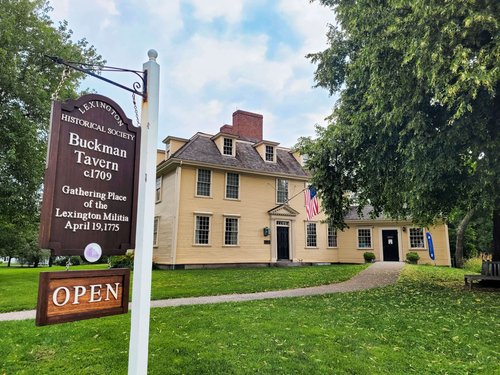While the term ‘farm-to-table’ has been trending over the last few years, Colonists in the 1700s were practicing this method of food out of necessity. With the lack of transportation to deliver food from afar, Colonists relied on what they could forage or hunt locally. Interestingly enough, our diets today aren’t that different from what Colonists ate in the 1700s; their menus typically consisted of staples like pork, beef, hunted game, eggs, and fish accompanied by locally grown crops like corn, tomatoes, onions, pumpkins and greens. Colonists also loved their sweets and baked goods, such as Apple Pan Dowdy, which his wife, Abigail, regularly baked for John Adams and mile-high pies of a various berries. Food was cooked over an open hearth, serving as a heat source.
Quite different than in today’s world, before the discovery of electricity, Colonists stored their foods in various methods, including the critical use of salt, essential for preserving meats and fish and warding off bacterial growth to help extend shelf life. Other storage means included drying, smoking, pickling, canning, and fermenting foods for later use. The winters in Massachusetts were harsh for the Colonists; secure shelter, abundant stacked firewood, and warm clothing were all fundamental needs. Colonist families and neighbors would work hard together throughout the summer and fall to prepare and conserve enough food to last through the long and bitterly cold winter months.
A technique called burial was used to preserve food in the winter months. This consisted of literally burying food under hot coals, layers of straw, or sand. In the spring and summer months, food would be stored in cellars or caves to stay cool and were covered with blocks of ice wrapped in hay.
Beverages were particularly important in the 1700s, and Colonists of all ages relied on beer, wines, and especially apple cider for hydration, since water was filled with bacteria. In fact, beer and breweries played a pivotal role in planning the American Revolution. Local taverns could be found in almost every community and were much more than just a place to imbibe. They served as town halls and gathering places for neighbors to share news, debate political matters, exchange gossip, and stay warm.
The infamous Sons of Liberty, known as the Masterminds of the Boston Tea Party, would regularly gather at pubs and taverns over ‘a few cups’ to discuss intimate battle plans concerning the Revolution. Many key figures like Paul Revere, known for his famous Midnight Ride to warn the Colonial Militia of the approaching British troops, were regulars at the Green Dragon Tavern, known as the headquarters of the Revolution, and The Bell in Hand, both still operating in Boston. Also, Captain Parker, who led the Lexington Militia, gathered his troops at Buckman Tavern in Lexington before the Battles of Lexington and Concord.
By Phyllis M. Cahaly, CMD, Director of Partnership Marketing, Massachusetts Office of Travel & Tourism





